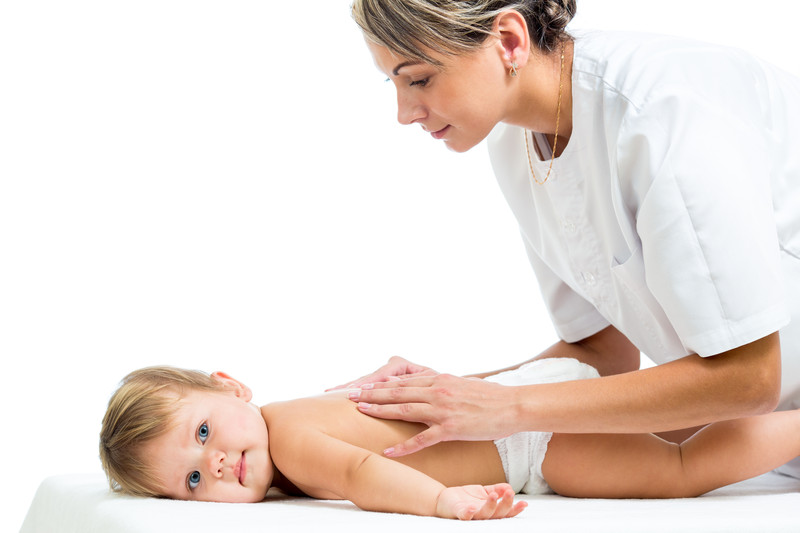So in case you haven’t noticed, I haven’t been posting quite as much as I was before we had Ms. Ellington. Having 2 kiddos is definitely busier all the time because there’s never any downtime (except for late in the evening when they are both asleep), so I haven’t had as much time for blogging. My goal is still to at least post one blog per week on topics you guys need and want to know about; I apologize in advance about the drop in content for a little while.
Ok, in the last Pediatric Health post we talked about fevers with our children and some simple, at home things you can do to try and keep their fever under control. Remember, one of the things we talked about is the fact that illness and fevers in our kids is NORMAL!! It’s actually really healthy for your child’s developing immune system to get sick and to have to fight off different illnesses as they grow up. That’s how the immune system strengthens itself. Even though it’s scary when they don’t feel good, just remind yourself that illness is a normal process in the body and that on the other side of this they are actually going to be healthier than before because this sickness is boosting your child’s immune system (easier said that done I know).
Now, I want to talk about respiratory or breathing conditions and some things we’ve found you can do to help your child handle these conditions easier.
There are several different breathing conditions that can affect children when they are younger. Let’s take a look at the top few conditions and what happens with each one:
1. Asthma: In the U.S. 10% of children have been diagnosed with and suffer with and from this illness. Asthma causes repeated episodes of wheezing, breathlessness, chest tightness, and nighttime or early morning coughing. This is a common long term diagnosis in children, but some adults also suffer from this condition. There’s no “medical cause” of asthma and diagnosis is very difficult (thank goodness!) in children under the age of 5. Most of the diagnosis involves questioning about length of sickness and whether or not you’ve had colds (with wheezing and coughing) lasting more than 10 days. Another way the medical profession may try to diagnose asthma is to use a spirometer to check lung capacity. Different triggers effect different children. Some children react to tobacco smoke or dust mites, while others react more to emotional stress as one of the main triggers.
2. Bronchitis: This condition causes inflammation in the air pathways and usually follows and upper respiratory infection like a chest cold. Mucus settles in the lungs and causes the child to cough frequently. Most of the symptoms of bronchitis last for about 2 weeks but the cough can last up to 8 weeks. Causes of bronchitis include RSV (see next), adenovirus, influenza, parainfluenza, and/or pollutants.
3. RSV: This is one of the most prevalent respiratory conditions currently happening in the pediatric population. We see countless patients every year who are diagnosed with this virus. RSV stands for Respiratory Syncytial Virus and is the most common cause of bronchiolitis (inflammation in the lung pathways) and pneumonia in children under the age of 1. Almost every single child will contract this virus by their second birthday. Most of the time, the symptoms of this virus resemble a cold. Children under the age of 6 months are the group at highest risk from this virus, but only .5%-2% of children under the age of 6 months are hospitalized each year because of complications of the virus. This virus can be spread by coming in contact in the air (from a child who is coughing or sneezing), and may also be passed by direct contact (kissing a baby with it, touching mucus or bodily fluids). While there are a couple options in drugs for prevention of RSV, there’s no real medical treatment for RSV once contracted and the illness usually lasts about 1-2 weeks. In the U.S., the most prominent time for kids to contract this virus is between November-April.
There are several different options that you can utilize to help your child’s breathing:
No matter what your child’s issue is, here are a few supplements that really help to support their body and allow them to fight off the illness quickly:
1. Thymex (we carry): This product is made by Standard Process and is designed to boost the immune system by supporting the thymus gland. The thymus gland is responsible for the secretion of T-Cells which aid in the immune process to help you fight off foreign invaders. Thymex increases the function of the thymus gland and increases the production of these T-Cells allowing the immune system to fight off sickness easier. Dosing varies depending on severity of illness, age, and weight so when you order some, ask me or one of the other doctors to recommend a specific dose.
2. Congaplex (we carry): Also made by Standard Process, this product is a supportive product for the lungs. One of the worst things is for all that plegm and congestion to start to migrate down into your child’s lungs and, like we talked about earlier, turn into pneumonia. Congaplex helps rid the lungs of that congestion and works to keep the congestion out of the lungs. This works well for sinus congestion also.
3. Fenugreek: We carry this herb, but you can also find it at most healthfood stores. Much like Congaplex, Fenugreek is an herb they describe as a demulcent. It works to reduce the mucus in your airways and helps to pull out extra plegm from either the sinuses or lungs. (It’s great when a nursing mom takes this to help her baby too because it tends to increase milk supply.)
4. Fish Oil (we carry): One of the best supplements for the lungs is DHA, which is found in fish oil. The fats are very important for the support of the linings of the lungs and breathing pathways. They also are good for the immune system and for helping your body produce normal amounts of cholesterol that you need in order to heal tissues that have been damaged by stress or sickness. We have 2 different companies we carry in the office. One is Innate Choice and the other is a Tuna Oil from Standard Process. Both are really good products that we highly recommend.
5. Vitamin D (we carry): More and more research is coming out about the benefits of Vitamin D. Among being really important for calcium absorption and soft tissue health, Vitamin D is important for the immune system and supports respiratory function. For children the best product we’ve found (that we now carry in the office) is a Vitamin D Sufficiency product from Innate Choice. It is a liquid dropper based in olive oil that has very little taste and lasts for a really long time. One drop is enough to supply the daily requirements for children.
6. Colloidal Silver (we carry): There’s been a lot of negative publicity on colloidal silver over the past few years, you can see my post about it here where I explain a lot of the myths surrounding the product. Suffice to say that it is one of the best antibacterial, antifungal, antiviral products on the market. I can only really vouch for the product we carry because I have years of clinical experience with it and I know for sure how it is made. If you get a product that isn’t made correctly (ie. incorrect colloidal process, wrong type of water, etc) then your body will possibly absorb the silver into your tissue (which should NOT) happen. The silver we carry out of Plano is not absorbed in the body and is processed out of your system within 72 hours.
There are probably many different oils that would really help, but we really stick with/use 2 different oils because they tend to work so well. We recommend Young Living oils because of the purity of the product and the potency.
1. Lavender Oil: This oil is a very calming oil that helps to reduce inflammation and help relax the body. In a time of respiratory distress with your child, this oil can come in really really handy. There are 2 ways to use it if your child is having problems breathing. The first is to rub some of the oil on your child’s chest. This will help to calm your child’s breathing down and relax them. What we usually recommend is to rub some of the lavender oil on the soles of your child’s feet and then put socks on them. This helps (through reflexology points) to open up the lungs and help them to breathe easier.
2. Peppermint Oil: Peppermint is a very strong oil that is really good at opening up the lungs and allowing for better breathing but because of it’s potency we recommend that you use a cutter oil to use it. This means that you mix a drop or two of the peppermint oil in with olive oil before you use it. Rubbing it on the body may cause irritation so sometimes it is best used as an efervescent. Place in a pot of hot/boiling water over the stove to let it run into the room, or place your child in a bathroom while you run the shower to make it really steamy inside the bathroom. Put 2-3 drops of the peppermint oil in the bath while the water runs and this will help with breathing.
3. Eukalyptus Oil: This oil works like a Vick’s Vapor rub. Put some on the chest to reduce inflammation and irritation to the lungs and help your child’s breathing that way as well.
4. Raven Oil and RC Oil: These are two more oils from Young Living that we’ve found really help support the respiratory system. Dilute them down and rub them on the chest and on the feet and they work great.
Glad you asked! There are several things you can do for your child to help with their breathing.
1. Chiropractic Care: Getting your kids adjusted helps to boost their immune system, balance their nervous system, and reduce inflammation in their body. You want your child’s body operating at tip top shape to be able and fight off whatever foreign invader has attacked their system. The adjustments also help to increase motion in the rib cage which in a problem with your child not breathing makes a huge difference because they have an easier time taking a breathe when their ribs are moving correctly. For a list of several research articles published on the effects and benefits of chiropractic care and breathing in children, go here.
2. Cold Laser Therapy: In our office one of the therapies we use to increase the function of cells in the body is a cold laser. Our laser is made by a company called Erchonia out of McKinney, Texas and is the best low-level light laser on the market. The idea behind laser therapy like this is that the laser emits a specific frequency that can be programmed for different tissues in the body. When placed on the body, that frequency increases energy production in the cells that are targeted and those cells function at a higher rate and heal faster. It has been shown to reduce inflammation and swelling, reduce congestion, increase soft tissue healing, and many many other things.
3. Ionic Foot Bath Therapy: Also from Erchonia, the ionic foot bath is a great detoxification tool that uses polarity to pull toxins out of the body through the feet. We have found this to be very beneficial in kids who are having a problem breathing. If you remove toxins from the body, the body will automatically have more energy to do its job easier and can fight off sickness better. The treatments last 12-20 minutes and make a huge difference.
Sorry that this turned out so lengthy, but I wanted to give you a good, rounded approach to helping your children with breathing issues that may come up. The biggest thing is to make sure and pay attention to your child, watch for their signs and symptoms, and to trust your instincts as a parent. If you feel your child is in any danger with their breathing, don’t waste any time taking them to an emergency center to have them evaluated.


